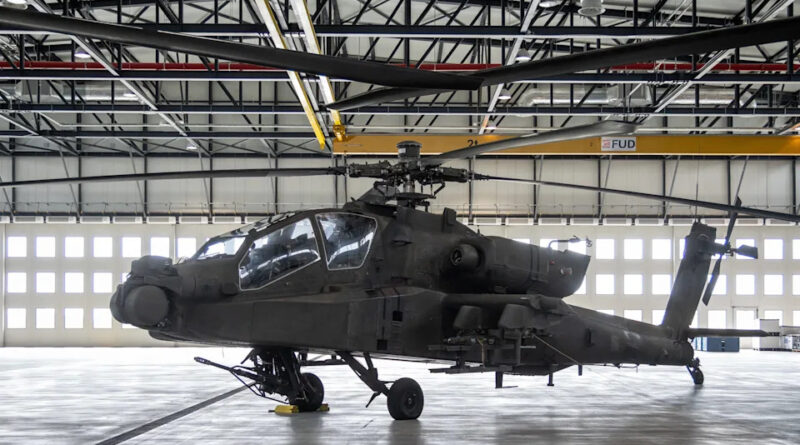NATO is deploying Dutch and Norwegian F-35s over Poland in major boost to air defenses
-
NATO is set to deploy F-35 jets over Poland to deter Russian threats near Ukraine.
-
The mission marks the first F-35 operation in Poland under NATO command.
-
The planned deployment highlights NATO’s strategic shift and Poland’s role as a defense hub.
NATO is set to boost its air defense along its eastern flank with Dutch and Norwegian F-35 fighter jets scheduled to patrol Polish skies from September through early December.
The mission, announced by the Dutch Ministry of Defence, aims to secure key supply lines into Ukraine and deter Russian activity near allied territory.
This will be the first time fifth-generation F-35s operate from Poland under direct NATO command — an upgrade from previous missions that used older aircraft like the F-16 or Eurofighter.
According to Jamie Shea, former NATO Deputy Assistant Secretary General for Emerging Security Challenges, the shift is both symbolic and strategic.
“The F-35s represent a much greater military capability for air defense and intelligence gathering — especially at a moment when Russia is sending as many as 700 drones and ballistic missiles a night against targets in Ukraine,” Shea told Business Insider.
The deployment will run as a 24/7 quick reaction alert, with Dutch and Norwegian personnel operating jointly under NATO control. It followed a request from NATO’s Supreme Headquarters Allied Powers Europe, prompted by intensifying Russian strikes near the Polish-Ukrainian border.
Russia has increasingly targeted infrastructure in western Ukraine, including areas near Lutsk and Ternopil, where Western aid and weapons often enter.
“As Russia goes closer to the Polish border, there is the danger of more Russian drones and missiles landing inside Poland itself,” Shea said.

An APACHE helicopter during a ceremony marking the delivery of the first helicopters of this kind to the Polish Armed Forces.Wojtek RADWANSKI / AFP
The mission reinforces — but doesn’t replace — Poland’s existing air defenses.
While NATO F-35s have previously flown over Estonia, the upcoming operation in Poland stands out for its length and multinational framework. The six-month deployment is among the longest for NATO F-35s and introduces a shared operational structure.
“A six-month deployment is a significant commitment by Norway and the Netherlands,” Shea said. “Usually, F-35 deployments last only a few days during exercises.”
He also said it’s novel that two countries are sharing this mission together, “which enhances their technical interoperability and ability to work jointly, not only with each other but also with the Polish Air Force.”
He called the mission a prime example of the defense integration Europe needs in response to Russia’s attack on Ukraine, melding top-tier equipment and coordination.
Andrew A. Michta, a senior fellow at the Atlantic Council’s GeoStrategy Initiative, said the deployment “signals both the growing realization at NATO that the threat from Russia to the alliance itself is real and growing. It also marks an important step in addressing the question of force posture.”
Michta noted that most long-standing US military bases in Europe are still in Germany, the Cold War’s frontline. “Today, Poland plays the same role,” he said, “the key hub of NATO defenses in the East and the center of the Northeast Corridor.”
“Poland is also the critical transit route for aiding Ukraine,” Michta added. “Deploying the F35 should shore up deterrence on the flank and send a message to Moscow about our continued commitment to Ukraine.”
A critical moment for Poland
The mission also comes at a critical time for Poland, which faces mounting air-defense pressure. The Polish Air Force has just 48 F-16s, with newly purchased FA-50s from South Korea now entering service.
Michał Piekarski, a defense analyst at the University of Wrocław, stressed the persistent risk near NATO’s airspace.
“The airspace of Poland, as well as other countries on the Eastern Flank of NATO, is constantly threatened by Russian activities,” he told BI. “On a regular basis, Russian large-scale missile and drone strikes against Ukraine create a risk that stray missiles or drones may enter NATO airspace.”
He added that NATO aircraft are already a presence during these strikes, and that the F-35s will “greatly support our fighters.”
Piekarski also warned of another danger: the vulnerability of Polish infrastructure near the Ukrainian border.
This could come in the form of a deliberate — or masqueraded as accidental — Russian attack on Polish logistical hubs like airports, railway freight stations, or gas and petroleum infrastructure, he said.
“Credible deterrence is required if we want this hypothetical scenario to remain a hypothesis, not reality,” he added.
With Poland still awaiting delivery of its own F-35s, joint training with experienced NATO partners is also crucial.
Warsaw ordered 32 F-35A aircraft from US manufacturer Lockheed Martin in 2020, and is set to receive the first ones in 2026.
“Any opportunity for joint training and better understanding of the capabilities that F-35s do have is highly valuable for our armed forces,” Piekarski said.
Ukraine watching on
Hanna Hopko, the former head of Ukraine’s parliamentary foreign affairs committee, told BI that “the upcoming deployment of Dutch and Norwegian F-35s to Poland is a crucial step toward strengthening NATO’s deterrence posture and protecting the critical lifelines that support Ukraine’s defense.”
She called it part of a broader recognition of Russia’s wider threat.
“The security of the European continent is inseparable from the security of the skies over Ukraine and NATO’s eastern flank,” Hopko added. “Especially for member states sharing borders with Russia.”
But she said that more needs to be done.
“Now it must be scaled up — not just to protect supply corridors but also to shield critical infrastructure like Ukraine’s nuclear power plants,” she said, adding: “Democracies must act together to defend the rules-based order and the future security of the continent.”
Read the original article on Business Insider
